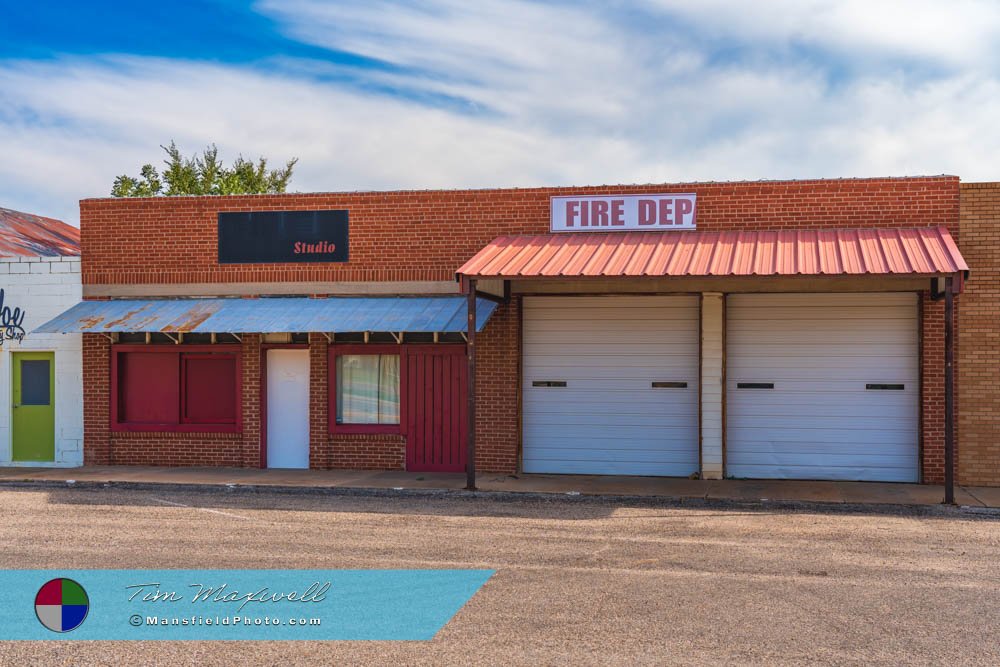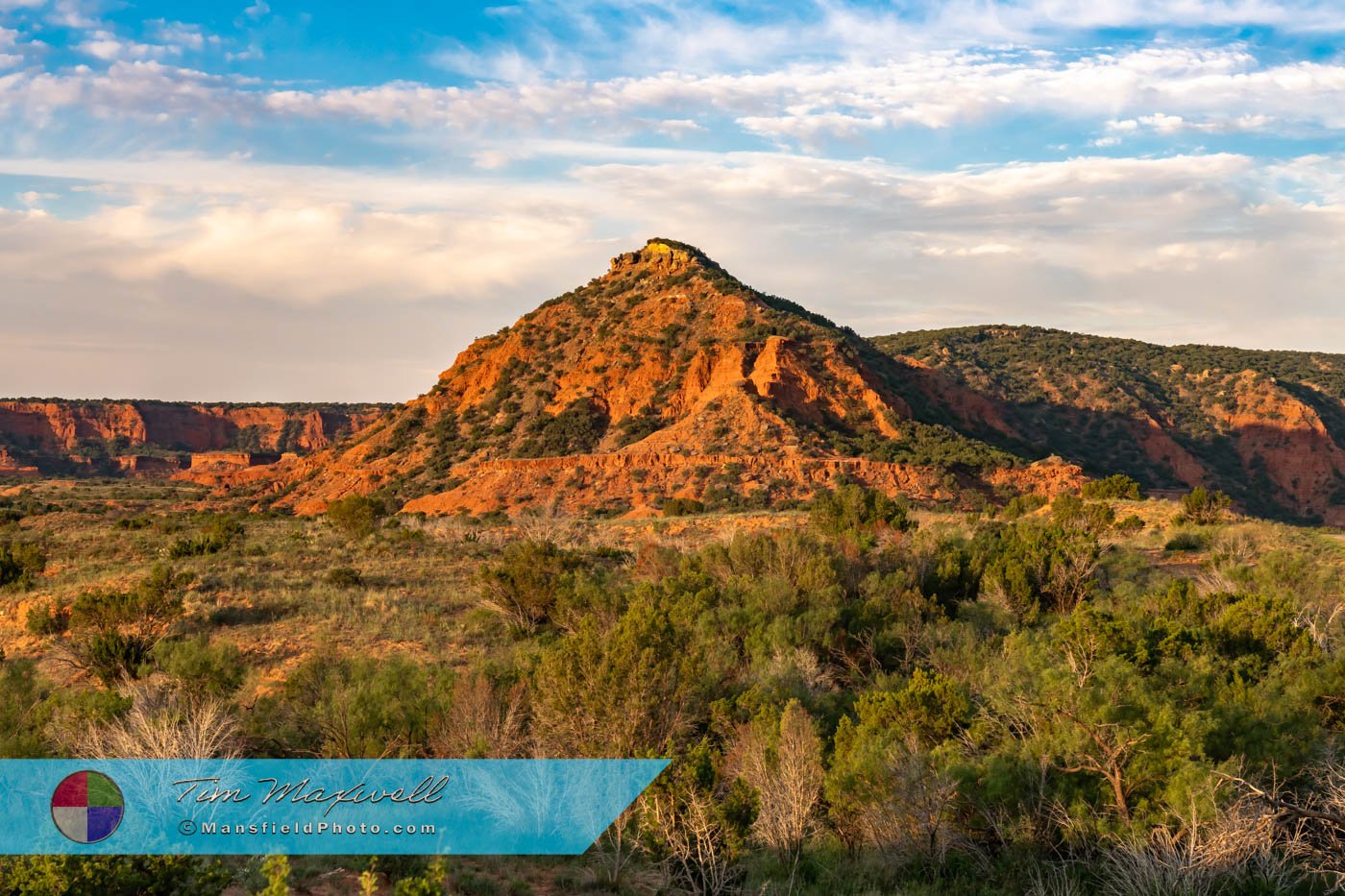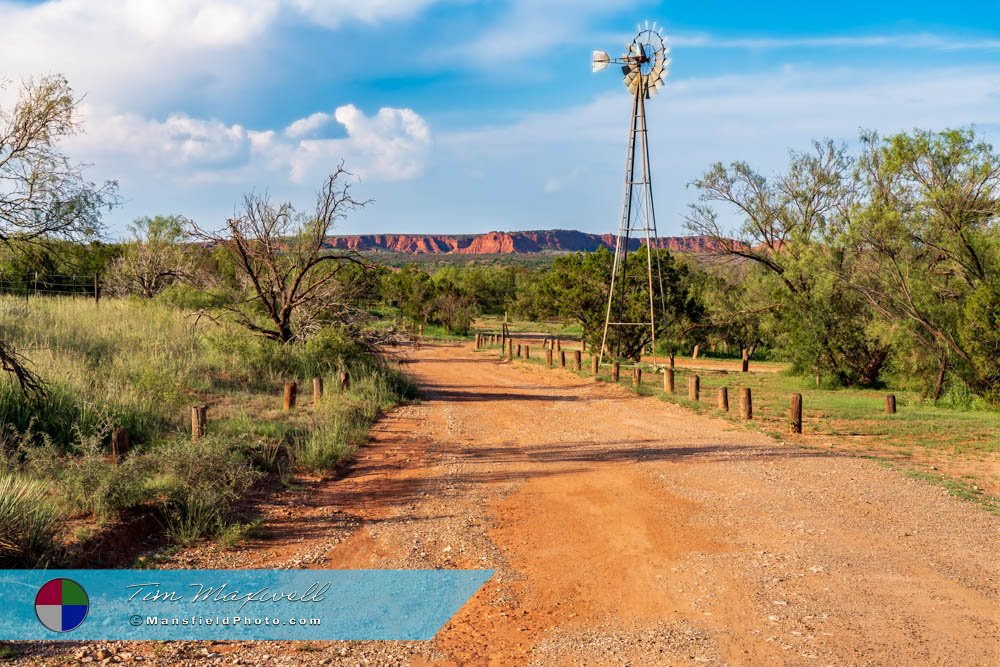Mansfield Photography
Roaring Springs, Texas
– A Town with Rich History and Natural Beauty.
Roaring Springs, Texas, is named after the powerful springs that once roared through the area, providing life-sustaining water to early settlers and Native Americans. These springs, located in the Caprock region, were a vital water source for cattle drives and settlers in the late 19th century. The sound of the rushing water echoing through the plains inspired the name Roaring Springs, capturing both the power and natural beauty of the area.
Early Settlement and Founding
The town was settled in 1912, initially as a support town for the Matador Ranch, one of the largest ranches in Texas. The arrival of the Quanah, Acme and Pacific Railroad played a significant role in the town’s development. The railroad brought new settlers and provided a means to transport cattle and goods, transforming it into a vital stop for both the railroad and ranchers. The town was officially founded and began to grow as ranchers, farmers, and merchants established their homes and businesses in the area.
The natural springs made it an attractive location, and the town became known for its cooling waters, which drew travelers, settlers, and cattlemen alike. Early on, the town served as a stopover for those traveling across the Panhandle Plains, and its economy was primarily driven by ranching and farming.
The History of Roaring Springs
In its early days, the town thrived as a ranching community and a key stop on the Quanah, Acme and Pacific Railroad line. The town’s connection to the Matador Ranch provided economic stability, and the community quickly grew around ranching and agriculture. It was also home to a health resort that capitalized on the pure waters of its springs. The resort attracted visitors who believed the mineral-rich water had healing properties, adding to the town’s reputation as a place of both relaxation and revitalization.
During the early 20th century, Roaring Springs continued to develop, adding schools, churches, and local businesses. At its height, the town boasted a thriving downtown area, with cafes, shops, and a bustling atmosphere centered around the ranching community.
Downtown
Roaring Springs’ downtown area is a reflection of its historic past. Though the town is small, many of its original buildings remain standing, offering a glimpse into early 20th-century life on the Texas plains. The Community Center, housed in a historic building, is a gathering place for locals and visitors alike.
While much of the town has maintained its rural charm, Roaring Springs’ downtown is quiet today, with a few remaining businesses. The post office and community center continue to serve as important institutions in town life, while the historic depot and old buildings tell the story of the town’s once-bustling days.
Interesting Facts About Roaring Springs
- Roaring Springs Park: A unique feature of the town, this park was developed around the natural springs that gave the town its name. In the past, it was home to a popular swimming pool fed by the springs, which attracted visitors from all around the region. Though the springs no longer “roar” as they once did, they still play an important role in the town’s identity.
- Matador Ranch: Roaring Springs’ proximity to the Matador Ranch continues to be an important part of its heritage. The ranch, established in the late 1800s, spans tens of thousands of acres and remains one of the largest working ranches in Texas. Its connection to the town helped shape Roaring Springs’ early development.
- Historic Train Depot: Roaring Springs was a major stop on the Quanah, Acme and Pacific Railroad, and the town’s historic train depot still stands as a testament to its importance as a railroad town.
Roaring Springs Today
Roaring Springs is now a small, quiet community, home to fewer than 300 residents. Though the population has dwindled, the town retains its charm and connection to its history. The legacy of the ranching industry remains a central part of life in Roaring Springs, and many residents are still involved in agriculture, raising cattle and working the land.
The town is also known for its proximity to the Caprock Canyons State Park, which offers stunning natural beauty, hiking trails, and opportunities to see bison herds. Visitors to the area often stop in Roaring Springs to take in its tranquil atmosphere and learn about its past.
Though the springs no longer flow as vigorously as they once did, the town continues to embrace its namesake and natural surroundings. Roaring Springs is a place where history and nature blend together, creating a peaceful retreat for those looking to escape the hustle and bustle of modern life.
Conclusion
Roaring Springs, Texas, may be a small town, but its rich history and connection to the natural world make it a unique destination in the Texas Panhandle. From its origins as a ranching town and railroad stop to its present-day status as a quiet rural community, Roaring Springs offers a glimpse into Texas’ past while maintaining its own distinct identity. Whether you’re exploring the nearby Caprock Canyons or simply passing through, Roaring Springs is a hidden gem worth discovering.
📸 Interested in More Photos of This Town?









